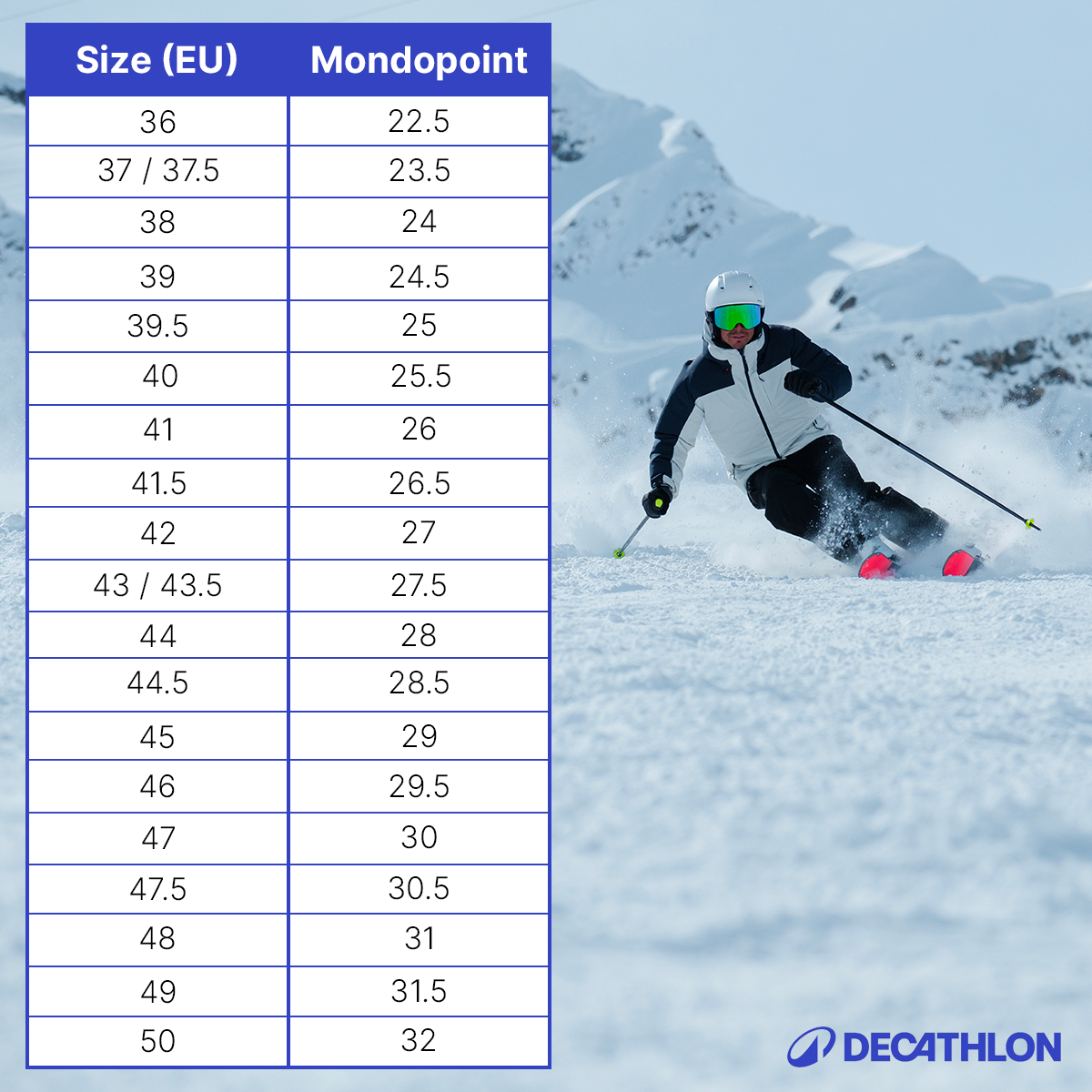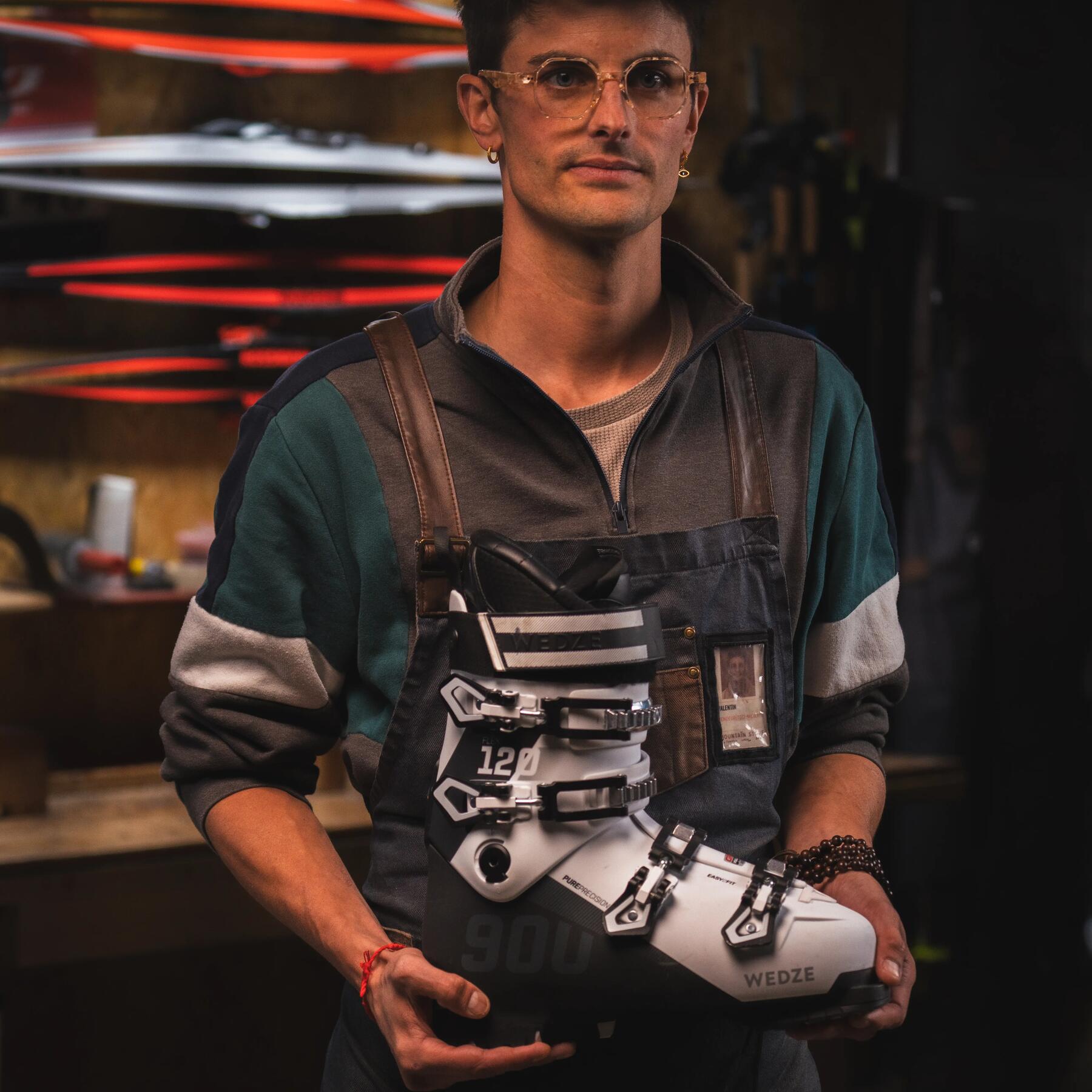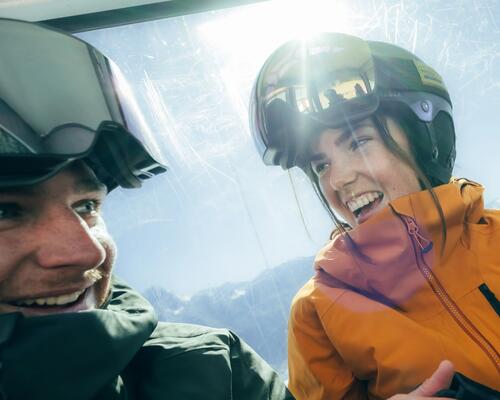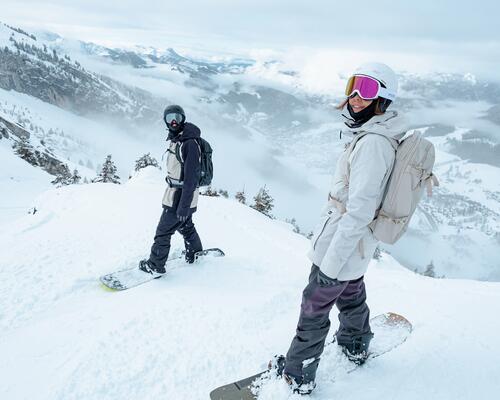First consideration: the right flex for your level of skiing.
The flex rating of a ski boot specifies the stiffness of the boot. It is determined according to two criteria: the skier's level and weight. Although it is not a standardised rating, all equipment manufacturers follow the same rule: the higher the flex rating, the greater precision a skier has underfoot. The rating also varies slightly between women's and men's ski boot models (a difference of 10 to 20 points). So, which rating is suitable for each level of skiing?
















